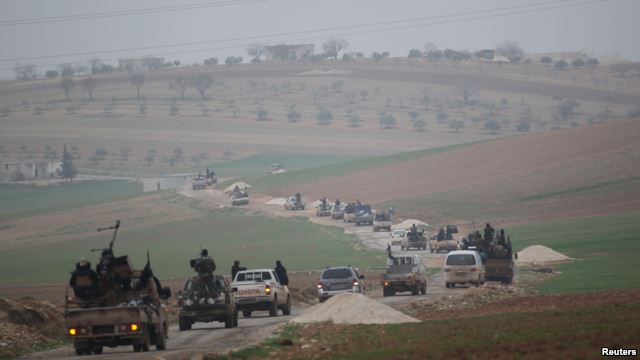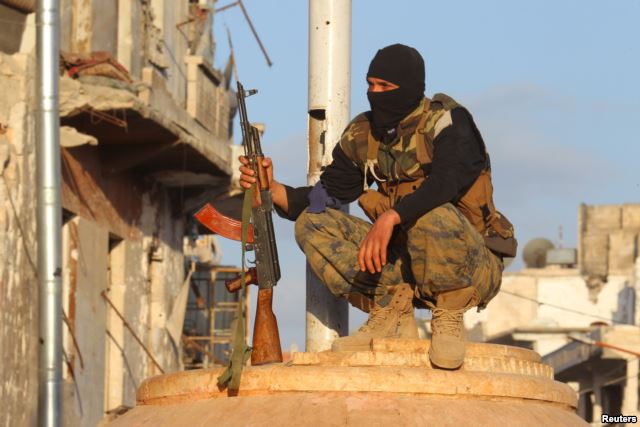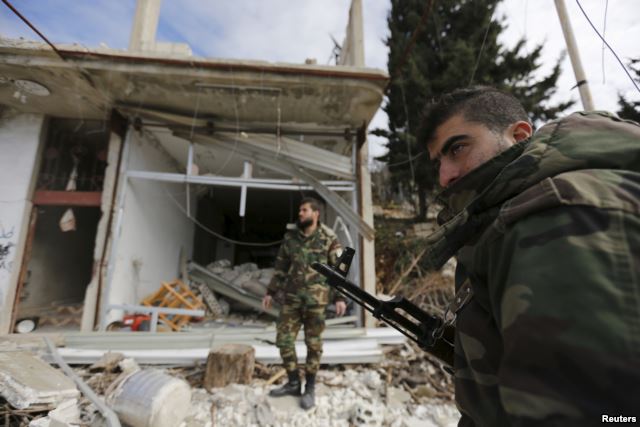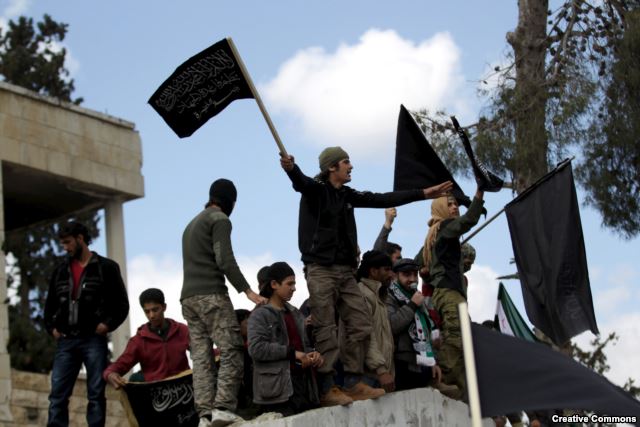Syria’s Pro-Democracy Protesters Show Renewed Defiance in Face of Jihadist Intimidation

The reduction of hostilities in Syria after last month's cease-fire deal has led to a resurgence of demonstrations in rebel-held areas.
Thousands of pro-democracy activists have taken to the streets to demand that President Bashar al-Assad relinquish power. And as political activists and ordinary residents again find their voice, their target isn't only the Assad regime, but also jihadist groups such as al-Qaida's affiliate in the country, Jabhat al-Nusra.
For more than a week, people in the southern suburbs of Damascus have held protests urging al-Nusra to withdraw from districts controlled by opposition forces south of the capital.
The protests were sparked in the town of Beit Sahem after al-Nusra fighters fired on a checkpoint manned by opposition militiamen; then intensified when the fighters killed a protester, according to activists with a group calling itself the Rally for the Syrian Revolutionary Spring.
Protesters have rallied in dozens of towns in the northern Syria province of Idlib, an al-Nusra stronghold since the jihadists and affiliated hardline Islamist factions seized it in March 2015.

Al-Qaida's affiliate has sometimes talked of the province as an emirate, but has refrained from trying to control all aspects of local governance. Grass-roots councils that have sprung up in Idlib oversee education and local services.
Al-Nusra fighters say the protesters waving the three-star revolutionary flag associated with the moderate Free Syrian Army (FSA) are being fomented by rival armed factions. They point to the involvement of Ahmad al-Saoud, leader of the Western-backed FSA Division 13, in anti-Nusra protests in the town of Maarat al-Numan.
The claim is dismissed by Bassam al-Kuwaitli, managing director of RM Team, a monitoring and evaluation research organization that works with local and international NGOs on projects in Syria.
"It is mostly activists trying to reclaim their space back," he said of the protests.
The brandishing of the revolutionary flag is seen as part of that reclaiming. But al-Nusra sees the banner as representing secularism, and recently announced a ban on the flag.
Protests tax al-Nusra
According to Charles Lister, an analyst with the Middle East Institute, a Washington, D.C.-based think tank, the protests represent a serious challenge to al-Nusra. The jihadist group is "vulnerable when faced with constrained levels of violence," he said.
Faced with emboldened locals and activists, the al-Qaida affiliate has overstepped in its reaction to the burgeoning protests, he adds.
The jihadists deployed scores of militants on motorbikes to storm a street demonstration in mid-March in Maarat al-Numan. The crackdown quickly morphed into the raiding of weapons storage facilities belonging to the 13th Division and the arrest of some of the FSA militia's members.
For many, the scene was reminiscent of Jabhat al-Nusra's elimination of FSA rivals — the Syrian Revolutionaries Front in Idlib in November 2014 and Harakat Hazm in Aleppo in March 2015, according to Lister.
"However, what has followed the 13th Division's subjugation in Maarat al-Numan is markedly different,” he added. “Both the SRF and Harakat Hazm were widely distrusted by Syria's conventional opposition, but the 13th Division is extremely popular."
Protests have continued — demonstrators set fire to an al-Qaida jail and freed detained 13th Division fighters March 13. A similar pushback has been seen in other towns in northern Syria and the Damascus suburbs, where local sheiks and clerics warned al-Nusra that an aggressive response would prompt an explosion.
Growing opposition
Militarily preeminent within the armed opposition to Assad, al-Nusra now risks provoking a widespread popular backlash.
Activists argue that as peace negotiations continue in Geneva, the West should seize the opportunity to embrace the Syrian opposition to Assad and offer greater material support — both to non-armed groups and the armed wing of the revolution.

Anti-Nusra protests also have continued in the city of Salqin in the Idlib countryside and in the town of al-Atareb on the outskirts of Aleppo, where al-Nusra seems unable to intimidate opponents into silence by attacking opposition militiamen and local residents.
The same is true in the towns of Beit Sahem, Yelda and Babila in the suburbs of the Syrian capital.
According to the Sham News Network, an anti-Assad media outlet, the unpopularity of al-Nusra is built on "accumulated grievances" between the jihadist group — a onetime ally of the Islamic State but now a bitter rival — and local residents. Six civilians were injured in protests when al-Nusra members opened fire on demonstrators last month.
The Assad regime's reaction to the anti-Nusra protests isn't helping the pro-democracy protesters. Several towns that have seen protests have been targeted for airstrikes — seemingly a regime tactic to undermine political activism and shore up support for al-Nusra. Since the uprising against Assad began, the regime has maintained that all its opponents are "terrorists."
On Friday, Syrian government warplanes targeted Maarat al-Numan with multiple airstrikes in what Lister described in a tweet as an "unsurprisingly cynical move" by the Assad regime.
Политика конфиденциальности | Правила пользования сайтом








